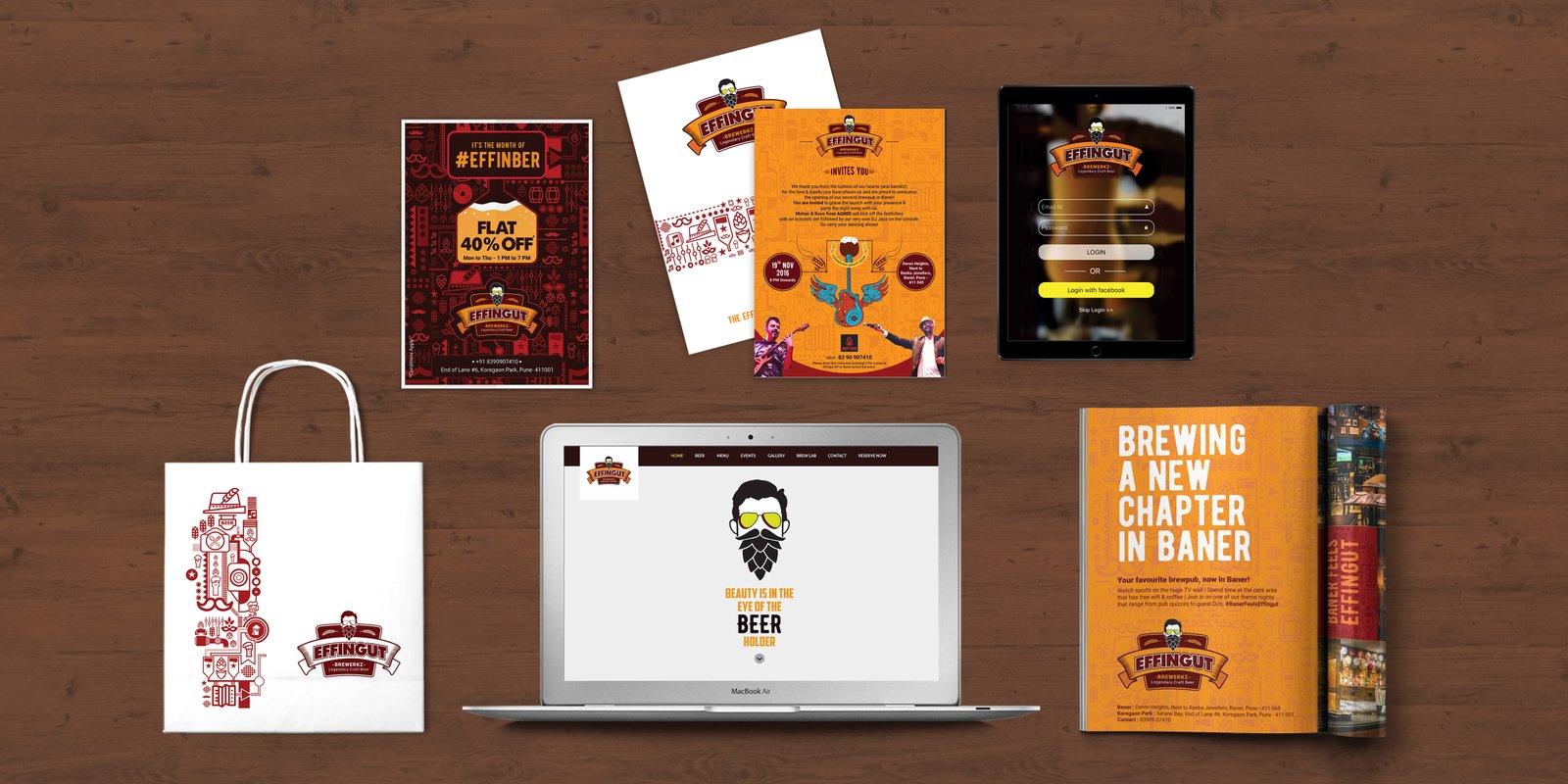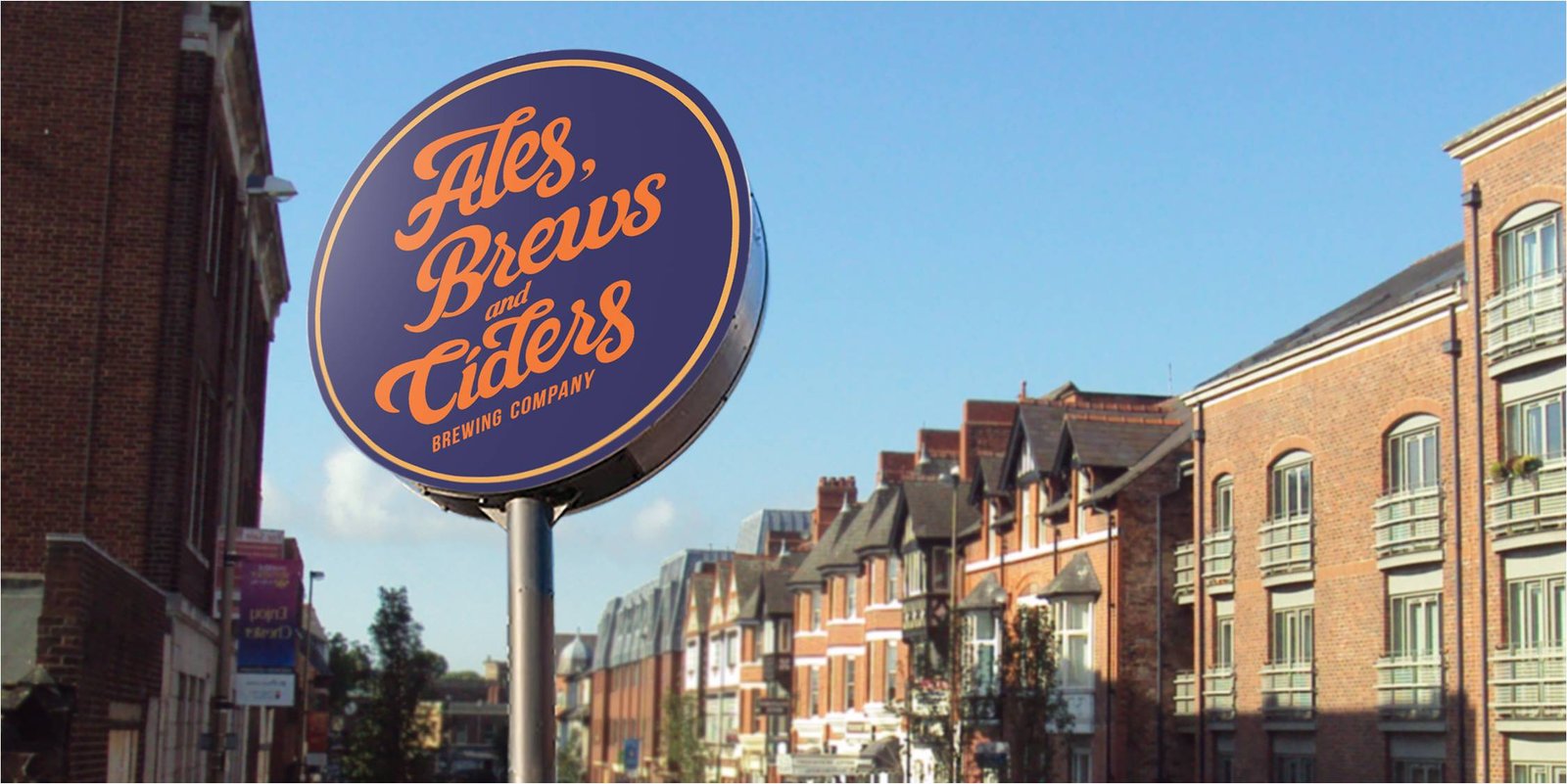Best practices for restaurant / hotel branding
When you walk into an establishment, be it a restaurant or a hotel, what are the first things you notice? As marketers, the first things we may notice are logos and fonts, but what about the patrons? They will enter your establishment with minimal expectations, so what they may see will make a lasting impression. Often, the first things that we typically notice are décor, colours, furniture arrangement, and the general ambience of the space. It is this “feel” that will determine your first impression, and in the hospitality business, first impressions are everything. This is why there is no scope for being casual. There is a fine line between classy and in-your-face, and within these fine line lie a few practices that will help you convey your principles and identity through your branding.
Practice 1: Create a brand playbook
One of our clients, Effingut, had an uphill challenge to face- standing out from the crowd in a space that’s already cluttered with cut-throat competition. The marketing collaterals we designed for them are in complete harmony. This is the outcome of maintaining a brand playbook- synchronicity and harmony in your communication as a brand. No matter how big or small your establishment may be, a brand playbook is a must. This is a detailed book which has a detailed set of colour schemes, fonts, imagery, and aesthetic functions which are true to your brand. A lot of psychology goes into the creation of a brand playbook, and once it’s complete, let it become your brand bible. Having this playbook helps everyone working on the brand to be on the same page. It prompts synergy in communication and provides a set of guidelines and training materials for new hires.
 Practice 2: Differentiate yourself well
Practice 2: Differentiate yourself well
There are so many ways to stand out, but make sure that you keep in mind functionality and your brand. A classic example that comes to mind is the work we did with Smirnoff towards the retail launch of their Lime flavoured vodka in India. Our clever little testers allowed users to experience the product like never before. This helped them stand out, all while complying with the stringent rules placed on the liquor industry in India. Study your target audience and offer features and values that cater to them specifically, for example, since Instagramming photos of food is a trend among the youth, you could have a small setup with a Polaroid camera where patrons can take a keepsake home with them, besides their digital photos. Concept restaurants are so successful because of this differentiating factor.
Practice 3: Design aesthetic signage that is functional
Signage is a brand property that’s going to last a long time, so you need to pay close attention to it. Your signage should stick out in the sense that instead of looking like any other signage that you’d see in any other hotel, your patron should see something signature and unique. Professionals in the hospitality business sometimes tend to overlook the aesthetics in signage, and although functionality and way-finding are of prime importance, generic signage will do little to establish a good impression. Whether it’s incorporating brand colours or fonts, or using motifs that creatively represent instructions, make sure that your signage is unique and true to your brand. An example for in synch signage could be the work we did for Ales, Brews and Ciders. As you can see, the signage is in synch with everything else about the brand, and every element of the brand, from the fonts to the design and even the colours have been used uniformly.
Practice 4: Seasonal photo-shoots
When was the last time you updated your brand collaterals? Unless you want to become an “expectation vs reality” meme, make sure that your brand collaterals are up to date. Your hotel may look different throughout the year, for example, a sunset in the summer is very different from one in the monsoon, so make sure that you conduct seasonal photo-shoots to capture improvements and additions, and the change in season.
Practice 5: A rich digital experience to go with that luxurious stay
So you want to go on vacation. What’s the first thing that you’ll most likely do? Visit the website! The first thing that people do before booking a stay or going to a restaurant is to Google it (or Zomato it!). The website and social media channels should be up to mark to provide a digital experience that’s on par with your establishment.
Practice 6: Give your patrons all access
Give patrons an opportunity to go behind the scenes on occasion. This builds trust and brand loyalty, especially for restaurants because they can see the cleanliness and cooking practices for themselves. Take this opportunity to validate your core brand values and what you stand for, from a trustworthy source -the customer.
Practice 7: Sprinkle some UGC into your branding
The Body Shop India encourages users, bloggers and fans alike, to share their experiences, they do an occasional repost to Collect customer testimonials and feedback and use that as user-generated content for your marketing properties. This makes your patrons feel special and cared for. In our hyper-connected digital world, everyone has the urge to be heard, and what better way than to make them a brand ambassador. Seeing fellow customers share testimonials will encourage others to share their experiences as well.
Practice 8: Highlight your hashtags
Amplify the reach of your unique experience beyond the physical world into the digital. Slip in your hashtags in a subtle manner into various forms of communications to prompt more people to share their experiences. This also helps create a community of loyal patrons who can identify with each.
Do remember that effective branding that resonates on a deeper level is the only way to draw your patrons back and build brand loyalty. The customers that choose to ally with you because they believe a sense of shared values with you are likely to be the most loyal ones. This is why it pays to pay attention to the finer details to ensure that everything you do is aligned with that central theme.
We can help you leverage these best practices to build your restaurant/ hotel brand! Write to us on info@lokusdesign.com





